Tungsram Gas Discharge Lamps


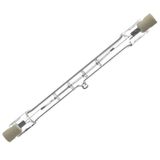

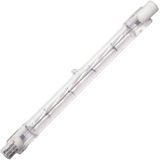
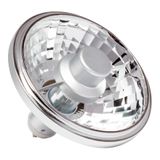
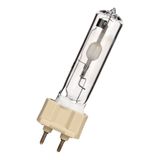
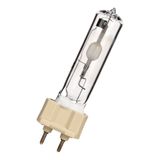
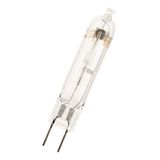
tungsram gas discharge lamps project context
Tungsram has kept HID in the toolkit for sites that need punchy lumen packages, long throws, and rugged hardware. Where LED isn’t viable due to heat, dust, or retrofit constraints, tungsram gas discharge lamps deliver stable beams, predictable color, and known maintenance intervals for engineers who plan around relamping windows.
tungsram hid lamps range and form factors
Portfolio coverage spans 35–1000 W with E27/E40 screw, G12/PGZ12/GX10 ceramic caps, clear or coated bulbs, and elliptical or tubular envelopes. Lumen output runs roughly 3.5–110 klm depending on wattage. Gear options include magnetic ballast + ignitor + capacitor packs and electronic HID control gear with end-of-life (EOL) cut-off and hot-restrike on selected ratings. These points make tungsram hid lamps straightforward to slot into existing circuits where control panels, fusing, and cabling are already sized.
tungsram metal halide lamps technical parameters
Ceramic and quartz MH cover 35–400 W with typical CCT 3000–4200 K (up to 5600 K specialty), CRI 80–95, and efficacy ~80–110 lm/W. Warm-up is 2–4 min; hot restrike 5–15 min unless pulse-restart gear is specified. PGZ12/G12 types need square-wave or low-crest-factor gear to stabilize color. For EMC, keep ignitor leads short and bond screens 360° at gland plates. Safety and performance align to IEC 62035 (lamp safety) and IEC 61167 (MH), with controlgear to EN/IEC 61347-2-9. These details help teams select tungsram metal halide lamps for auditoria, apron floodlighting, or high-mast retrofits where color rendering matters.
tungsram mercury lamps retrofit considerations
MV sources remain in legacy road and plant rooms at 50–400 W, CRI ~45–60, CCT 3800–4200 K, and efficacy ~45–60 lm/W. Many circuits use simple choke ballasts; check capacitor values to keep PF ≥ 0.9. Where kept in service, confirm luminaire temperature class and glass containment. De-energize and allow cool-down before handling; restrike can take > 10 min. Engineers keeping tungsram mercury lamps in operation usually plan staged change-outs toward ceramic MH on the same gear or a full LED kit once cabling and optics are surveyed.
tungsram sodium discharge lamps efficiency and control gear
HPS 50–1000 W remains the efficiency leader in HID at ~90–150 lm/W with CCT 1900–2200 K and CRI 20–30; white-sodium variants lift CRI where required. Ignition needs 2–5 kV pulses; superimposed ignitors suit long cable runs, series types suit close-coupled gear trays. Lamp voltage drifts upward with age—specify gear with EOL cut-off to prevent cycling. Roadway, yard, and tunnel owners keep tungsram sodium discharge lamps for uniformity on long corridors where photometric files and maintenance patterns are already approved.
tungsram industrial discharge lighting applications and compatibility
Heavy industry, ports, steel bays, waste-handling, and high-bay logistics use HID where ambient > 50 °C, airborne contaminants, or voltage dips defeat commodity LED drivers. Check luminaire IP/IK, glass containment, and surge immunity ≥ 4 kV L-N. For tunnels and tall halls, verify hot-restrike requirements against evacuation and blackout procedures. BACnet/Modbus lighting panels can still meter feeders while running fixed-output circuits. When specifying tungsram industrial discharge lighting, align lamp type with optics (asymmetric road, narrow flood, wide high-bay) and keep ballast temperature rise within label limits.
tungsram high intensity discharge lamps selection criteria
Start with target lux and mounting geometry, then pick wattage and cap. Confirm ballast family, ignitor topology, capacitor kvar, and permissible cable length. Check CCT/CRI versus task, surge category, and luminaire Tmax. For EMC, route screened ignitor leads away from control I/O and ground braids 360°. Photometry should be from the exact lamp/optic pairing to avoid beam shift. These checkpoints make tungsram high intensity discharge lamps predictable in tenders and handover tests.
Technical specifications and standards that matter
Operating voltage 220–240 V, 50/60 Hz; ambient −20…+50 °C typical (verify per lamp code). Caps E27/E40/G12/PGZ12/GX10; ignition 2–5 kV; crest factor ≤ 1.8 on electronic gear. Compliance references: IEC 62035 (HID safety), IEC 60662 (HPS), IEC 60188 (mercury), IEC 61167 (MH), EN/IEC 61347 controlgear, and luminaire containment per IEC 60598. Thermal clearances must keep lamp and gear within Tmax with canopy closed.
Applications and compatibility
Roads, yards, tarmac aprons, foundries, paper mills, sports halls, tunnels, and tall warehouses. For dimming, use electronic HID gear with 50–70 % setpoints on approved SKUs; magnetic gear is on/off only. Always verify luminaire pulse-withstand (kV) and reflector material when moving between MH and HPS to avoid color or focus shifts.
Integration with other Tungsram products
Pair with Tungsram ignitors, capacitors, and magnetic or electronic ballasts from the same rating tables to keep lamp current and EOL behavior inside spec. Where sites migrate area lighting to LED, keep discharge in heat-exposed bays and coordinate optics so mixed technologies still meet uniformity. Cross-reference with Tungsram luminaires, floodlights, and control gear categories to streamline approvals.
Selection criteria for B2B buyers
- Fix wattage and cap against pole height or mounting.
- Choose MH for color/CRI or HPS for lm/W and lifetime; MV only for short-term continuity.
- Confirm ballast/ignitor family, capacitor kvar, and cable distance.
- Check photometry with your exact lamp code.
- Lock EMC and surge levels in panels and fittings; specify 360° braid clamps at entries.
- Align maintenance windows to warm-up/restrike times and stocking codes.
Advantages of working with Bankoflamps
You get project-specific pricing, near-hour quote turnaround by EAN/MPN, and live EU stock before crews are scheduled. The portal shows current lead times, shipment tracking, and downloadable price lists with validity dates for planning. Trusted buyers can use post-payment up to 30 days. We consolidate partials so lamps, gear, and luminaires arrive room-bundled by riser or elevation. Your account manager cross-checks wattage ranges, cap types, gear coordination, surge notes, and thermal limits against drawings—keeping deliveries site-ready across France, the Baltics, Germany, Spain, Italy, Belgium, and the Netherlands.